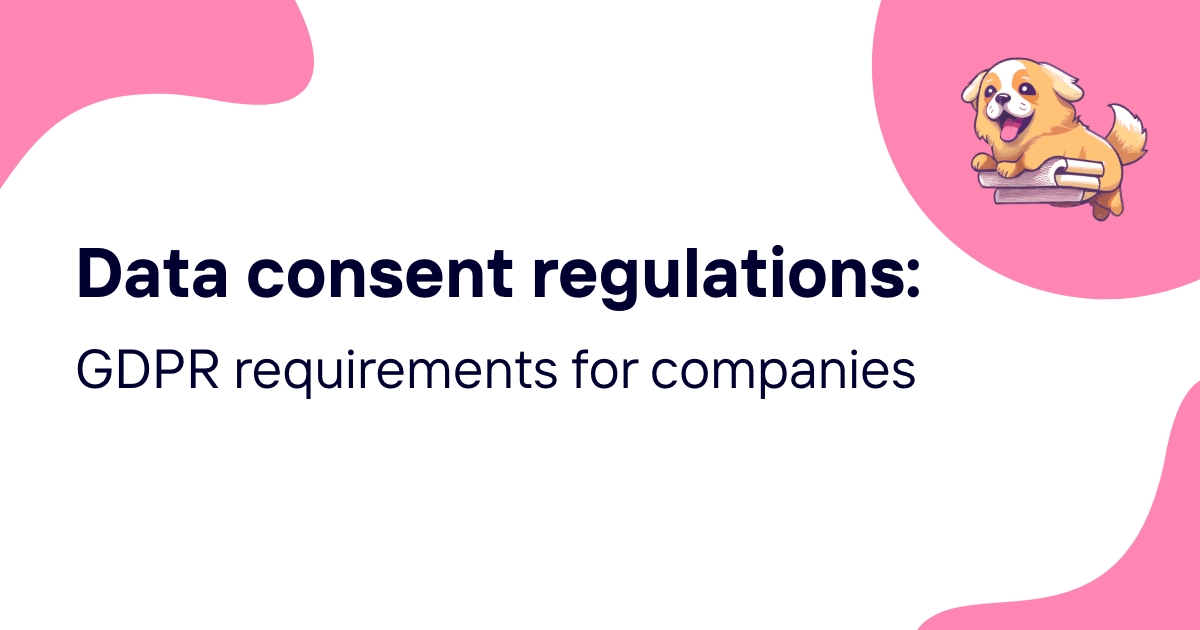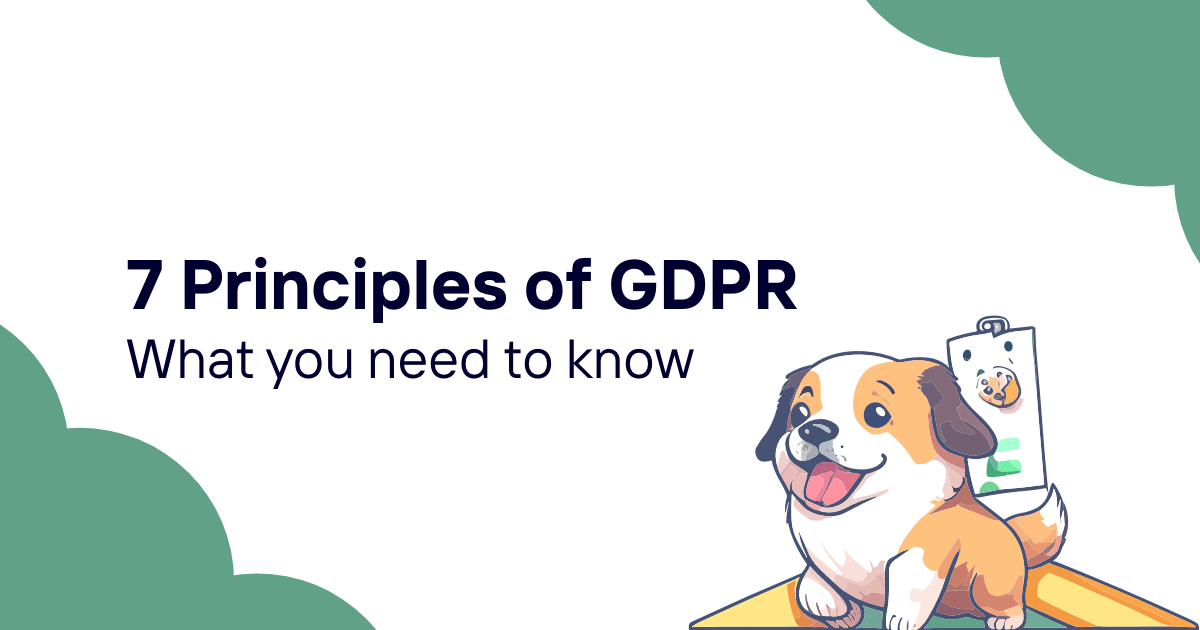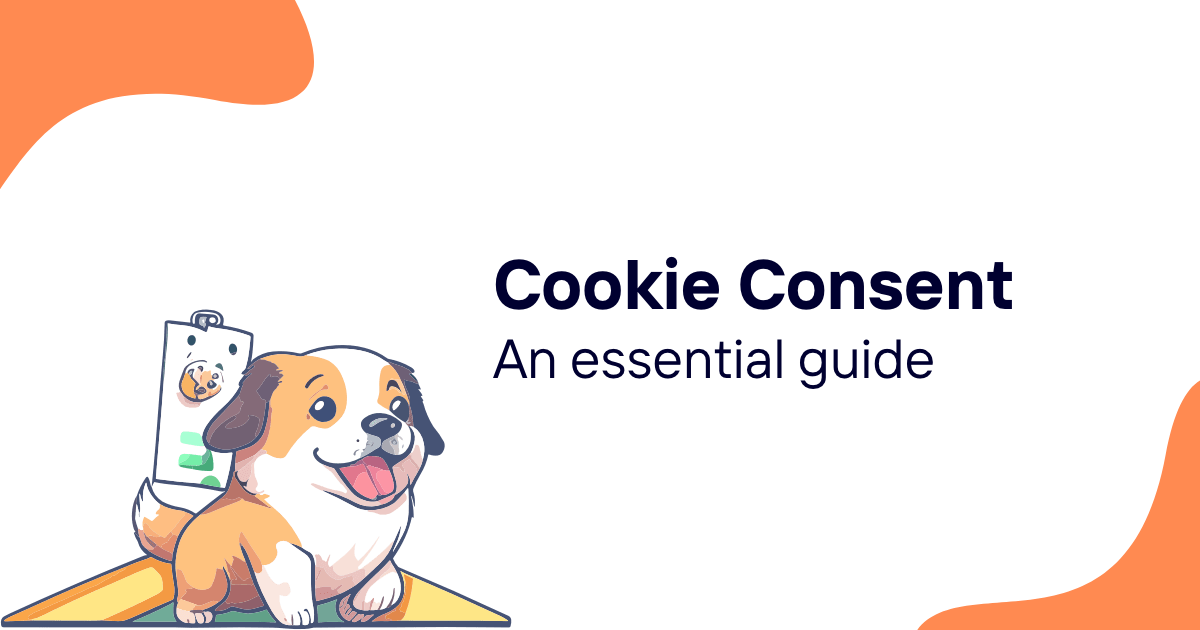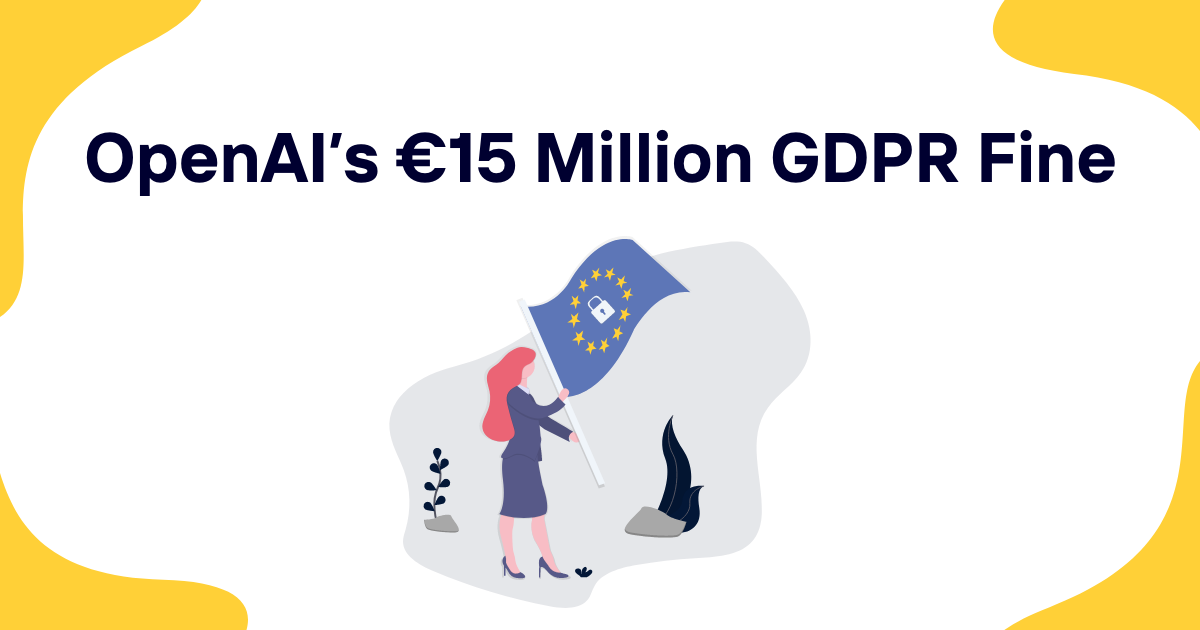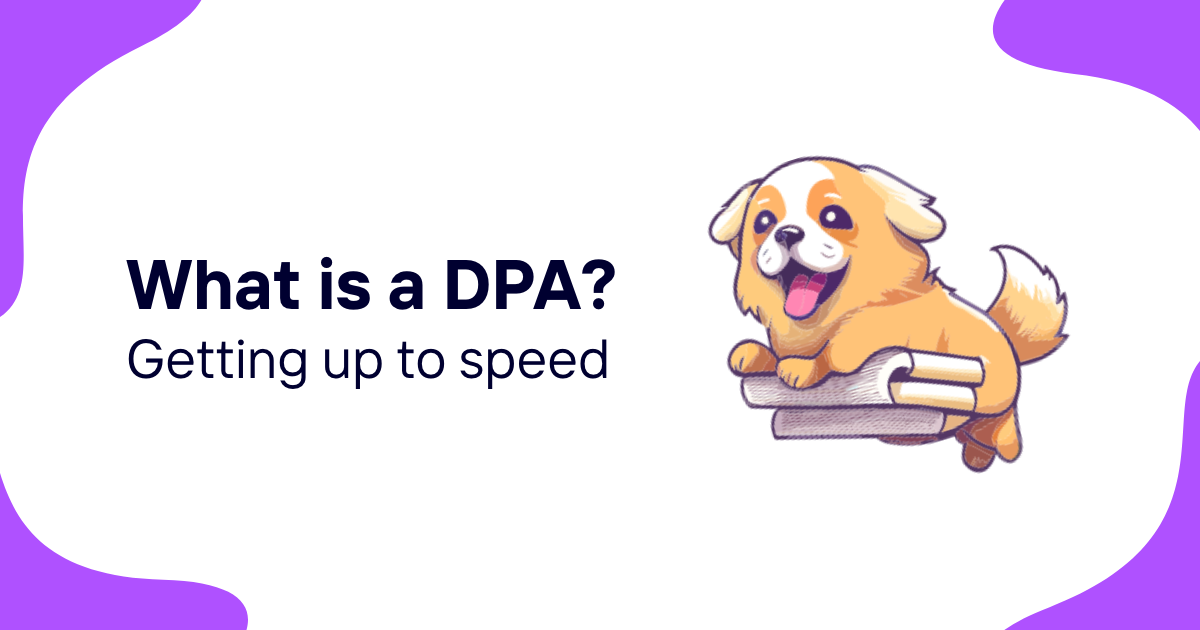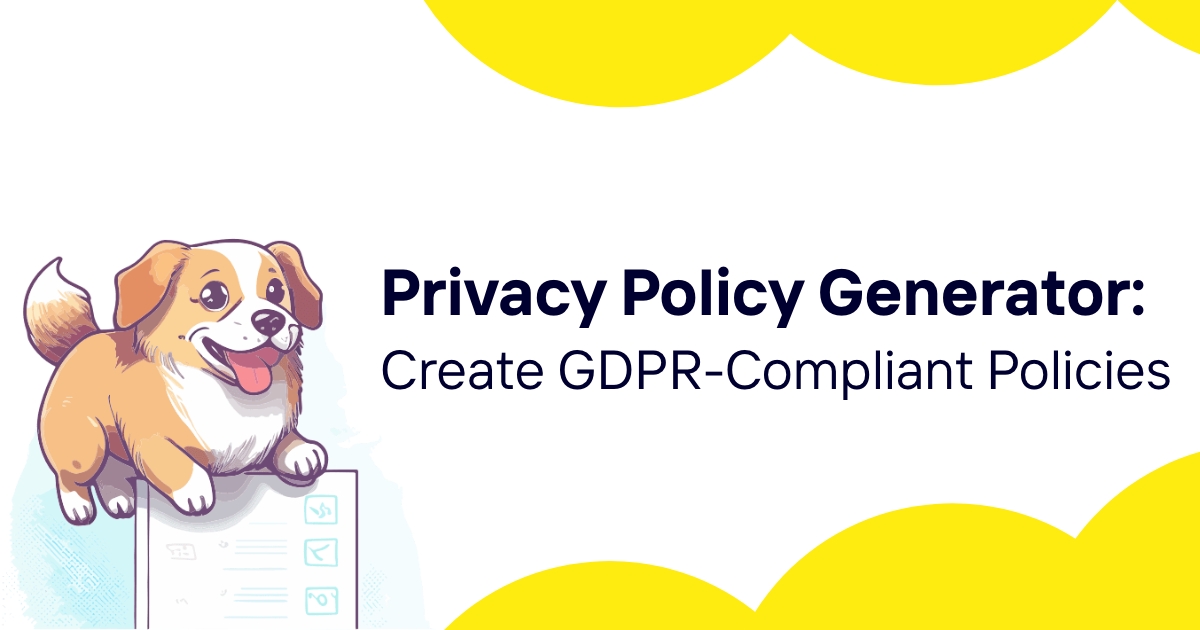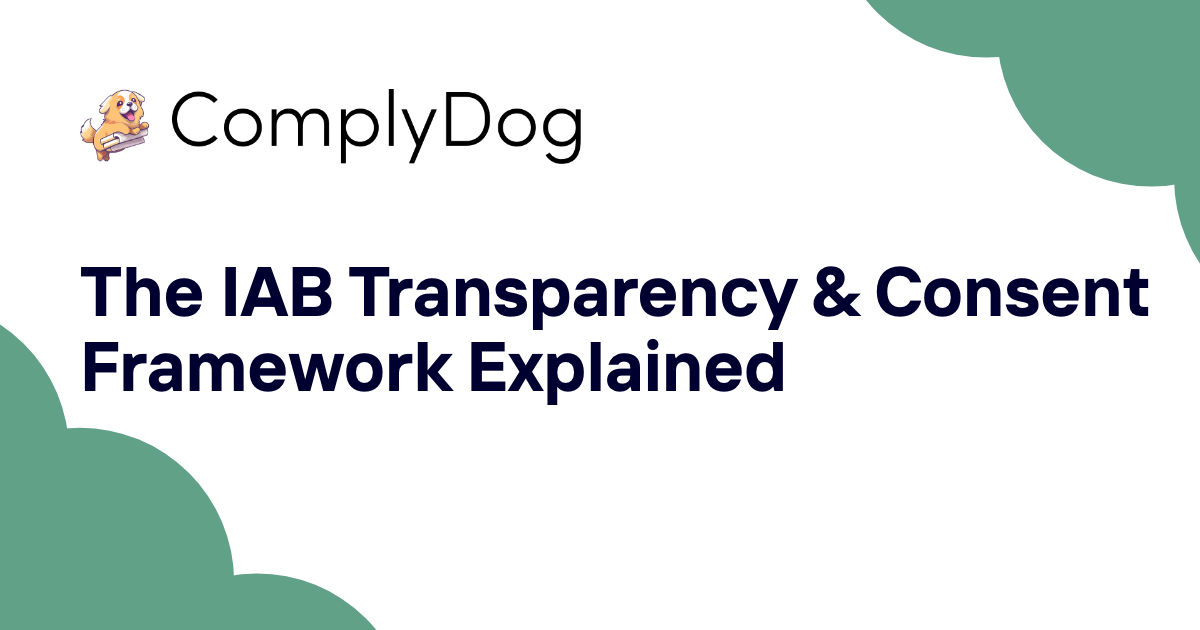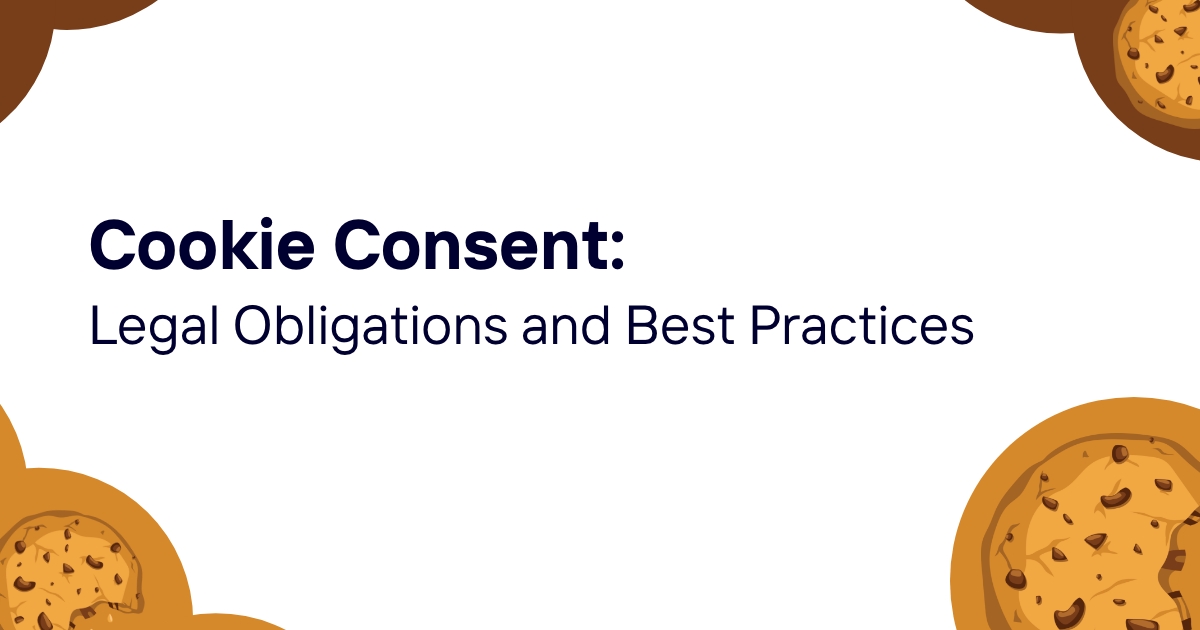When Apple introduced its App Tracking Transparency feature, the mobile advertising world practically had a meltdown. One small notification asking users for permission to track their data across apps sent billions of dollars in ad revenue tumbling. Why? Because data consent – that simple act of saying "yes" or "no" to data collection – holds tremendous power in our digital economy.
But here's the thing most people don't realize: consent isn't just about checking a box anymore. It's become the cornerstone of modern privacy law, with strict legal requirements that can make or break a business. Companies that get it wrong face massive fines, regulatory scrutiny, and customer backlash that can destroy years of brand building.
The European Union's General Data Protection Regulation (GDPR) transformed how we think about data consent, setting a global standard that influences privacy laws worldwide. From California's Consumer Privacy Act to Brazil's General Data Protection Law, regulations across the globe now demand explicit, informed consent before businesses can collect or process personal data.
Table of contents
- What is data consent?
- Legal foundation of data consent under GDPR
- The four pillars of valid consent
- When consent is not the right legal basis
- Consent mechanisms and implementation
- Special considerations for different data types
- Children's consent and parental authorization
- Consent withdrawal and data subject rights
- Business implications and compliance strategies
- International perspectives on data consent
- Technology and automation in consent management
- Building a consent-first organizational culture
What is data consent?
Data consent represents the formal agreement between individuals and organizations regarding the collection, processing, and use of personal information. Think of it as a digital handshake – but one with serious legal implications that extend far beyond a simple greeting.
At its core, consent serves as one of six lawful bases for processing personal data under GDPR. The other five include contract performance, legal obligation compliance, vital interest protection, public task execution, and legitimate interest pursuit. However, consent stands apart as the only basis that places control directly in the hands of data subjects.
The definition seems straightforward: freely given, specific, informed, and unambiguous indication of the data subject's wishes. But anyone who's tried to implement compliant consent mechanisms knows the devil lurks in the details. Each component carries weight that can determine whether a business operates legally or faces regulatory action.
Modern consent differs dramatically from the vague terms of service agreements that once dominated the internet. Gone are the days when companies could bury data collection practices in pages of dense legal text. Today's consent requirements demand transparency, specificity, and genuine choice – concepts that challenge traditional business models built on extensive data harvesting.
The stakes couldn't be higher. Organizations that mishandle consent face penalties reaching 4% of annual global turnover under GDPR – a figure that has sent shockwaves through boardrooms worldwide. But beyond financial consequences, poor consent practices erode customer trust, damage brand reputation, and create competitive disadvantages in privacy-conscious markets.
Legal foundation of data consent under GDPR
GDPR Article 4(11) provides the regulatory definition of consent, establishing it as "any freely given, specific, informed and unambiguous indication of the data subject's wishes by which he or she, by a statement or by a clear affirmative action, signifies agreement to the processing of personal data relating to him or her."
Article 7 builds upon this foundation by outlining specific conditions for consent validity. Controllers must demonstrate that consent was given, provide clear information about withdrawal rights, ensure withdrawal remains as easy as giving consent, and avoid making service provision conditional on consent for unnecessary processing activities.
The regulation's approach reflects years of evolution in privacy thinking. Earlier data protection frameworks often accepted implied or passive consent – think pre-checked boxes or lengthy terms buried in privacy policies. GDPR explicitly rejects these practices, demanding active, informed choices from data subjects.
Recital 32 offers additional guidance, emphasizing that consent requires a clear affirmative act establishing a freely given indication of the data subject's agreement. This means silence, inactivity, or pre-ticked boxes cannot constitute consent. The recital also addresses power imbalances, noting that consent may not provide a valid legal basis when clear imbalance exists between the data subject and controller.
European data protection authorities have consistently reinforced these principles through enforcement actions and guidance documents. The Article 29 Working Party (now European Data Protection Board) issued comprehensive guidelines on consent, clarifying that valid consent must meet all four criteria simultaneously – not just some of them.
Courts across EU member states have further shaped consent interpretation through landmark cases. These decisions consistently favor data subject rights, establishing precedents that narrow acceptable consent practices and broaden individual protections.
The four pillars of valid consent
Freely given consent
The "freely given" requirement ensures genuine choice without coercion, deception, or significant imbalance between parties. This pillar addresses power dynamics that can compromise meaningful consent, particularly in employment relationships, public services, and monopolistic markets.
Several factors indicate whether consent was freely given:
- Genuine alternatives exist: Data subjects must have real options, including the ability to refuse consent without facing negative consequences for unrelated services
- No bundling or tying: Organizations cannot make consent for one purpose conditional on agreement to unrelated processing activities
- Power balance considerations: Special scrutiny applies when significant imbalances exist, such as employer-employee relationships or public authority interactions
- Economic incentives: While incentives aren't automatically problematic, they cannot create situations where consent becomes practically mandatory
Employment contexts present particular challenges. Workers may fear career consequences from refusing consent, making truly voluntary agreement difficult. GDPR acknowledges this reality, suggesting consent rarely provides appropriate legal basis for workplace data processing.
Specific consent
Specificity requires clear identification of processing purposes, data types, and intended uses. Generic consent for broad categories fails this test – each distinct purpose needs separate, clearly defined consent.
Effective specific consent addresses:
- Purpose limitation: Each processing activity requires distinct consent aligned with specific, explicit purposes
- Data minimization: Consent should only cover data necessary for the stated purpose
- Third-party sharing: Any data sharing with third parties requires separate consent specifying recipients and purposes
- Future uses: New processing purposes require fresh consent – blanket permissions for undefined future uses are invalid
Companies often struggle with specificity when they collect data for multiple purposes or anticipate future uses they cannot currently define. The solution involves granular consent mechanisms that allow subjects to consent to specific purposes while declining others.
Informed consent
Information requirements ensure data subjects understand what they're agreeing to before giving consent. This goes beyond basic disclosure to encompass meaningful communication about processing activities, risks, and consequences.
Informed consent must include:
- Controller identity: Clear identification of the organization collecting data
- Processing purposes: Specific explanation of why data is being collected and how it will be used
- Data categories: Types of personal data being processed
- Recipients: Third parties who may receive the data
- Transfer information: Details about international data transfers and associated safeguards
- Retention periods: How long data will be kept
- Withdrawal rights: Clear explanation of how to withdraw consent
- Automated decision-making: Information about any automated processing or profiling
The information must be presented in accessible language appropriate for the target audience. Legal jargon, technical terminology, and complex sentence structures can undermine informed consent by creating barriers to understanding.
Unambiguous consent
Unambiguous consent requires clear, affirmative action demonstrating agreement. Passive consent mechanisms – silence, inactivity, or pre-checked boxes – fail this standard by creating ambiguity about the subject's true intentions.
Valid consent mechanisms include:
- Opt-in checkboxes: Empty boxes that users must actively select
- Electronic signatures: Digital signing of consent statements
- Verbal consent: Recorded audio consent for phone interactions
- Behavioral consent: Clear actions like uploading files to a service designed for specific processing
- Two-step verification: Confirmation processes that require multiple affirmative acts
The key lies in removing doubt about the data subject's intentions. Any mechanism that could reasonably be interpreted as accidental, coerced, or misunderstood fails the unambiguous standard.
When consent is not the right legal basis
Many organizations default to consent as their primary legal basis, but this approach often creates unnecessary compliance burdens and user friction. GDPR provides five alternative legal bases that may prove more appropriate for specific processing activities.
Contract performance
Processing necessary for contract performance often provides stronger legal foundation than consent. This basis covers activities directly related to delivering goods or services that customers have purchased or requested.
Examples include:
- Payment processing for online purchases
- Shipping information for product delivery
- Account creation for service access
- Customer support communications
- Order fulfillment activities
Contract performance offers stability that consent cannot match. Customers cannot withdraw contract-based processing without terminating the underlying agreement, providing operational certainty for core business functions.
Legitimate interests
Legitimate interests can justify processing when three conditions align: legitimate interest exists, processing is necessary, and individual rights don't override organizational interests. This basis requires careful balancing but often suits business needs better than consent.
Common legitimate interest scenarios:
- Marketing to existing customers about similar products
- Fraud prevention and security monitoring
- Employee monitoring for workplace safety
- Direct marketing based on demonstrated customer interest
- Analytics for service improvement
The legitimate interests assessment must consider context, expectations, and potential impact on individuals. Organizations cannot simply declare legitimate interest – they must demonstrate genuine need and proportionate processing.
Legal obligations
Some processing activities stem from legal requirements that override individual consent. These obligations create mandatory processing that cannot depend on voluntary agreement.
Legal obligation examples:
- Tax record retention requirements
- Anti-money laundering compliance
- Employment law mandates
- Industry-specific regulations
- Court orders and legal requests
Organizations should clearly identify legal obligations driving their processing activities and avoid unnecessarily seeking consent for mandatory compliance activities.
Consent mechanisms and implementation
Effective consent implementation requires thoughtful design that balances legal compliance with user experience. The challenge lies in creating mechanisms that meet strict regulatory requirements while remaining practical for business operations and accessible for users.
Technical implementation approaches
Modern consent management demands sophisticated technical infrastructure that can capture, store, and manage consent across multiple touchpoints and systems.
Consent management platforms centralize consent collection, storage, and tracking across digital properties. These systems maintain detailed records of when, how, and for what purposes consent was obtained, supporting accountability requirements under GDPR.
API-based consent sharing enables consistent consent management across multiple systems and applications. This approach proves particularly valuable for organizations with complex technical architectures or multiple customer touchpoints.
Granular consent controls allow users to provide or withdraw consent for specific purposes rather than all-or-nothing approaches. This granularity improves user experience while meeting GDPR's specificity requirements.
Real-time consent verification ensures processing activities align with current consent status, automatically stopping activities when consent is withdrawn.
Design considerations for consent interfaces
User interface design significantly impacts consent validity and user experience. Poor design can invalidate consent or create compliance risks even when underlying legal frameworks are sound.
Effective consent interfaces feature:
- Clear visual hierarchy: Important information stands out without overwhelming users
- Progressive disclosure: Complex information is layered, allowing users to drill down as needed
- Plain language: Technical terms are explained in accessible language
- Visual consistency: Design elements align with overall user experience
- Mobile optimization: Interfaces work effectively across all device types
- Accessibility compliance: Design accommodates users with disabilities
Dark patterns – design elements that manipulate users into unintended actions – pose significant risks for consent validity. Examples include hiding withdrawal options, making consent appear mandatory when it's optional, or using confusing language to obscure choices.
Documentation and recordkeeping
GDPR Article 7(1) places the burden of proof for valid consent on data controllers. This accountability principle requires comprehensive documentation systems that can demonstrate consent validity during regulatory investigations or audits.
Effective consent records include:
| Data Element | Description | Legal Requirement |
|---|---|---|
| Timestamp | Exact time consent was given | GDPR Article 7 |
| Consent text | Exact language presented to user | GDPR Article 7 |
| User identifier | Method of identifying consenting individual | GDPR Article 7 |
| Processing purposes | Specific purposes user consented to | GDPR Article 6 |
| Withdrawal method | How user can withdraw consent | GDPR Article 7 |
| IP address | Technical verification of consent origin | Best practice |
| User agent | Browser/device information | Best practice |
| Consent version | Which version of consent was agreed to | Best practice |
Organizations must retain consent records for the duration of processing plus any legally required retention periods. The documentation should enable quick retrieval and verification of consent validity for specific individuals and purposes.
Special considerations for different data types
Different categories of personal data carry varying legal requirements and compliance obligations. Understanding these distinctions helps organizations apply appropriate consent standards and avoid regulatory pitfalls.
Special category data
GDPR Article 9 identifies special categories of personal data requiring heightened protection: racial/ethnic origin, political opinions, religious beliefs, philosophical beliefs, trade union membership, genetic data, biometric data, health data, and data concerning sex life or sexual orientation.
Processing special category data requires both a lawful basis under Article 6 and a specific condition under Article 9. Consent for special category data must be "explicit" – a higher standard than the "unambiguous" consent required for regular personal data.
Explicit consent characteristics:
- Express confirmation: Clear, specific statements of agreement
- Separate collection: Distinct consent process from regular data consent
- Enhanced information: Additional details about risks and implications
- Higher withdrawal standards: Easy, accessible withdrawal mechanisms
Organizations processing health data, biometric identifiers, or other special categories should implement separate consent flows with enhanced protections and documentation.
Behavioral and tracking data
Online tracking presents complex consent challenges due to the invisible nature of data collection and the technical complexity of modern tracking systems.
Cookie consent has evolved significantly since GDPR implementation. Simple cookie banners that assume consent from continued site use no longer meet legal standards. Valid cookie consent requires:
- Granular controls for different cookie categories
- Clear explanation of tracking purposes
- Easy withdrawal mechanisms
- Prevention of non-essential cookies until consent is given
Cross-device tracking creates additional complexity by linking user behavior across multiple devices and platforms. This practice requires specific consent that explains the linking process and its implications for privacy.
Behavioral profiling and automated decision-making trigger specific GDPR requirements beyond standard consent. Organizations must provide information about the logic involved, significance, and consequences of automated processing.
Location and biometric data
Location data and biometric identifiers carry particular sensitivity due to their potential for tracking and identification. These data types often qualify as special category data or require enhanced protection measures.
Location tracking consent must address:
- Specific purposes for location collection
- Frequency and accuracy of tracking
- Data sharing with third parties
- Storage duration and deletion practices
- Background versus foreground tracking
Biometric data processing typically requires explicit consent due to its classification as special category data. Organizations must explain how biometric templates are created, stored, and used, along with security measures protecting this sensitive information.
Children's consent and parental authorization
GDPR Article 8 establishes special protections for children's personal data, recognizing that minors may not fully understand the implications of data processing decisions. These protections create compliance obligations that extend beyond standard consent requirements.
Age verification and parental consent
The regulation sets 16 as the default age for valid consent to information society services, though member states can lower this threshold to 13. Below the applicable age threshold, processing requires consent from parents or guardians holding parental responsibility.
Age verification challenges include:
- Technical verification: Determining actual age without collecting excessive personal data
- Identity confirmation: Verifying parental relationship and authority
- Cross-border differences: Managing varying age thresholds across jurisdictions
- Fraud prevention: Preventing circumvention of age restrictions
Organizations serving European users must implement age-appropriate consent mechanisms regardless of their geographic location. This extraterritorial application affects global businesses that may not primarily target children but could attract underage users.
Child-friendly information and interfaces
When processing children's data, organizations must present information in language and formats appropriate for the intended age group. This requirement goes beyond simplified language to encompass design, visual elements, and interaction patterns that children can understand.
Age-appropriate design principles:
- Simple language: Vocabulary and sentence structure matched to reading levels
- Visual communication: Icons, images, and videos that support text explanations
- Interactive elements: Engaging but not manipulative design features
- Protective defaults: Privacy-friendly settings that don't require children to make complex choices
- Limited data collection: Collecting only information necessary for service provision
The UK's Age Appropriate Design Code provides detailed guidance on implementing these principles, influencing global practices even beyond British jurisdiction.
Consent withdrawal and data subject rights
GDPR Article 7(3) establishes that withdrawing consent must be as easy as giving it. This principle creates ongoing obligations that extend throughout the data processing lifecycle and can significantly impact business operations.
Withdrawal mechanisms and timing
Effective withdrawal systems must be accessible, intuitive, and immediately effective. Organizations cannot create barriers that discourage or delay consent withdrawal, such as:
- Complex multi-step processes for withdrawal when consent required only simple steps
- Requirements for written requests when consent was given electronically
- Mandatory waiting periods or cooling-off requirements
- Customer service contact requirements for automated consent processes
The withdrawal must take effect immediately for future processing, though organizations may continue processing data collected before withdrawal if alternative legal bases exist.
Impact on ongoing processing activities
Consent withdrawal creates ripple effects throughout organizational systems that require careful planning and technical preparation. Organizations must identify all processing activities dependent on specific consent and implement procedures to halt these activities promptly.
System integration challenges:
- Multiple databases and applications may process the same consented data
- Third-party systems may not receive immediate withdrawal notifications
- Automated processing systems require programmatic consent checking
- Legacy systems may lack granular consent tracking capabilities
Business continuity considerations:
- Alternative legal bases may justify continued processing for some purposes
- Contractual obligations may require certain data processing to continue
- Legal retention requirements may override deletion requests
- Operational processes may need redesign to function without withdrawn consent
Data subject access and portability
Beyond withdrawal rights, data subjects possess additional rights that intersect with consent management. These rights create ongoing compliance obligations that organizations must anticipate and prepare for.
Access requests require organizations to provide copies of personal data being processed, including the legal basis for processing and consent records. This obligation makes comprehensive consent documentation essential for regulatory compliance.
Data portability applies specifically to processing based on consent or contract performance. Subjects can request their data in structured, commonly used formats and have it transmitted directly to other controllers when technically feasible.
Rectification and erasure rights may apply when consent is withdrawn, particularly if no alternative legal basis exists for continued processing.
Business implications and compliance strategies
Consent management creates far-reaching implications for business strategy, operations, and technology infrastructure. Organizations must balance legal compliance with commercial objectives, user experience expectations, and operational efficiency.
Revenue and business model impacts
Consent requirements can significantly affect business models built on extensive data collection and sharing. Companies may need to restructure revenue streams, renegotiate partnerships, or develop alternative value propositions.
Advertising and marketing impacts:
- Reduced data availability for targeted advertising campaigns
- Lower conversion rates from generic, non-personalized marketing
- Increased costs for consent management technology and processes
- Need for alternative revenue models less dependent on personal data
Data monetization challenges:
- Restrictions on data sharing with partners and vendors
- Reduced data sets for analytics and business intelligence
- Compliance costs that may exceed data-driven revenue benefits
- Competitive disadvantages in data-dependent industries
Partnership and vendor relationships:
- Due diligence requirements for data sharing agreements
- Contractual obligations to ensure partner consent compliance
- Liability allocation for consent violations by third parties
- Termination procedures when consent is withdrawn
Organizational structure and governance
Effective consent management requires organizational capabilities that extend beyond legal compliance to encompass technology, operations, marketing, and customer service functions.
Cross-functional coordination:
- Legal teams establish compliance requirements and risk assessments
- Technology teams implement consent management systems and integrations
- Marketing teams adapt campaigns and customer communication strategies
- Customer service teams handle consent-related inquiries and complaints
Governance structures:
- Data protection officers provide specialized expertise and regulatory liaison
- Privacy committees coordinate cross-functional consent management activities
- Executive sponsorship ensures adequate resources and organizational commitment
- Regular audits and assessments verify ongoing compliance and effectiveness
Training and cultural transformation
Building consent-compliant organizations requires cultural shifts that prioritize privacy and individual rights throughout decision-making processes. This transformation affects hiring, training, performance management, and strategic planning.
Employee education programs must address:
- Legal requirements and regulatory landscape
- Organizational policies and procedures
- Technical systems and tools
- Customer communication and support
- Incident response and breach management
Performance metrics and accountability:
- Consent collection rates and quality measures
- Processing activity alignment with consent records
- Response times for withdrawal requests and subject rights
- Compliance audit results and corrective actions
International perspectives on data consent
While GDPR established influential consent standards, different jurisdictions have developed varying approaches that reflect local legal traditions, cultural values, and regulatory priorities.
CCPA and American approaches
California's Consumer Privacy Act takes a different approach from GDPR, focusing on opt-out rights rather than explicit opt-in consent for many processing activities. This framework reflects American legal traditions that emphasize business flexibility and consumer choice.
Key CCPA differences:
- Opt-out rather than opt-in for data sales and sharing
- Different definitions of personal information and sensitive data
- Alternative compliance mechanisms like privacy policies and disclosure requirements
- Focus on transparency and choice rather than consent as processing basis
Sectoral regulation impacts:
- HIPAA governs healthcare data consent with specific authorization requirements
- Financial services regulations address consent for data sharing and marketing
- Children's online privacy rules create consent obligations similar to GDPR
- State laws increasingly adopt GDPR-inspired consent requirements
Asian regulatory developments
Asian jurisdictions have developed consent frameworks that blend GDPR principles with local legal traditions and cultural expectations around privacy and data use.
Singapore's Personal Data Protection Act requires explicit consent for sensitive data processing while allowing implied consent for certain routine business activities. This approach recognizes practical business needs while protecting individual rights.
Japan's Act on Personal Information Protection emphasizes purpose specification and use limitation but allows broader interpretation of consent requirements, particularly for existing business relationships.
China's Personal Information Protection Law adopts GDPR-like consent standards while incorporating specific requirements for cross-border data transfers and national security considerations.
Emerging global standards
International organizations and industry bodies are developing frameworks that could harmonize consent requirements across jurisdictions, reducing compliance complexity for multinational organizations.
The International Organization for Standardization has published privacy engineering standards that address consent management as part of broader privacy-by-design frameworks.
Industry initiatives in sectors like digital advertising, healthcare, and financial services are developing technical standards and best practices for consent management that work across different regulatory environments.
Technology and automation in consent management
Modern consent management increasingly relies on sophisticated technology solutions that can handle the complexity, scale, and speed requirements of contemporary data processing activities.
Consent management platforms
Specialized platforms have emerged to address the technical challenges of collecting, storing, managing, and acting upon consent across complex organizational systems and processes.
Core platform capabilities:
- Multi-channel consent collection: Web, mobile, email, phone, and in-person consent capture
- Granular preference management: Fine-grained controls for different data types and purposes
- Integration APIs: Connections to existing business systems and applications
- Audit trails: Comprehensive logging for compliance demonstration
- Real-time enforcement: Immediate processing changes when consent status changes
Advanced features:
- Dynamic consent: Adaptive consent requests based on user behavior and context
- Predictive analytics: Insights into consent patterns and optimization opportunities
- Cross-device synchronization: Consistent consent management across multiple touchpoints
- Regulatory compliance monitoring: Automated checks for evolving legal requirements
Artificial intelligence and automation
AI technologies offer promising capabilities for improving consent management effectiveness while raising new questions about automated decision-making in privacy contexts.
Machine learning applications:
- Natural language processing: Analysis of consent language for clarity and compliance
- User experience optimization: A/B testing and personalization of consent interfaces
- Fraud detection: Identification of suspicious or invalid consent patterns
- Regulatory change monitoring: Automated tracking of evolving legal requirements
Ethical considerations:
- Transparency: Users should understand how AI influences their consent experience
- Manipulation prevention: AI should not manipulate users into providing consent
- Bias mitigation: Automated systems should not discriminate against protected groups
- Human oversight: Critical consent decisions should involve human review and approval
Blockchain and distributed consent
Emerging technologies like blockchain offer potential solutions for creating immutable, transparent consent records that could address trust and verification challenges in consent management.
Potential blockchain applications:
- Immutable consent records: Tamper-proof documentation of consent decisions
- Decentralized identity: User-controlled consent management independent of specific organizations
- Smart contracts: Automated consent enforcement and compliance verification
- Interoperability: Standardized consent records usable across multiple platforms
Technical challenges:
- Scalability: Current blockchain technology may not handle enterprise-scale consent management
- Energy consumption: Proof-of-work systems create environmental concerns
- Regulatory uncertainty: Evolving legal frameworks may not accommodate blockchain-based solutions
- User experience: Complex technology may create barriers for average consumers
Building a consent-first organizational culture
Creating sustainable consent compliance requires more than implementing technology solutions or updating privacy policies. Organizations must build cultures that prioritize privacy and individual rights throughout their operations and decision-making processes.
Leadership commitment and strategy
Successful consent programs require visible executive commitment that allocates resources, establishes accountability, and communicates the importance of privacy throughout the organization.
Executive responsibilities:
- Strategic vision: Integrating privacy considerations into business strategy and planning
- Resource allocation: Providing adequate budget and personnel for consent management programs
- Risk tolerance: Establishing clear boundaries for acceptable consent-related risks
- Performance expectations: Setting measurable goals for consent compliance and effectiveness
Board-level oversight:
- Governance structures: Privacy committees or designated board members with privacy expertise
- Regular reporting: Quarterly or annual privacy performance reports including consent metrics
- Risk assessment: Integration of consent-related risks into enterprise risk management
- Incident response: Clear escalation procedures for consent-related compliance issues
Employee empowerment and accountability
Building consent-compliant cultures requires empowering employees throughout the organization to identify privacy issues, make privacy-protective decisions, and escalate concerns when necessary.
Training and education programs should address:
- Role-specific responsibilities: Tailored training for different functions and seniority levels
- Practical application: Real-world scenarios and case studies relevant to daily work
- Regular updates: Ongoing education about evolving legal requirements and organizational policies
- Assessment and certification: Testing to verify understanding and competence
Accountability mechanisms:
- Performance metrics: Privacy-related goals incorporated into employee performance reviews
- Recognition programs: Rewards for employees who demonstrate exceptional privacy leadership
- Escalation procedures: Clear channels for reporting privacy concerns without retaliation
- Corrective actions: Consistent consequences for privacy policy violations
The shift toward consent-first business operations represents more than regulatory compliance – it reflects changing consumer expectations and competitive dynamics in privacy-conscious markets. Organizations that view consent management as strategic opportunity rather than compliance burden position themselves for long-term success in the evolving digital economy.
Companies ready to transform their consent management practices should consider comprehensive solutions that address the technical, legal, and operational challenges outlined throughout this analysis. Platforms like ComplyDog provide integrated tools for managing consent collection, documentation, and enforcement while maintaining the flexibility needed for diverse business requirements.
Building effective consent management capabilities requires expertise, technology, and ongoing commitment. But organizations that invest in these capabilities gain competitive advantages through improved customer trust, regulatory compliance, and operational efficiency that justify the initial implementation effort.
The future belongs to businesses that respect individual privacy rights while delivering valuable services and experiences. Consent management provides the foundation for achieving this balance.
